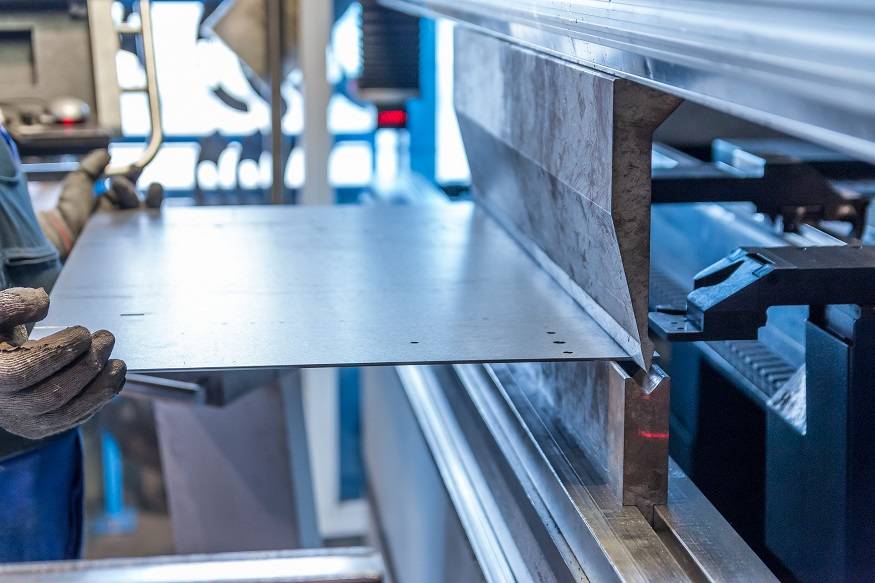Stainless steel grades for architectural projects

Stainless Steel, as its name implies, is best known for its corrosion resistance properties. But the many benefits and revolutionary uses of stainless steel extend far beyond any single attribute, as attested by its presence in applications in nearly every industry.
One of the most visually stunning and transformative implementations of stainless steel has been within the field of architecture, which has altered skylines around the world.
Whilst there are many famous architectural landmarks around the world that feature stainless steel, its application is just as important in smaller, everyday architectural projects such as homes, offices and city infrastructure.
The properties of stainless steel make it an ideal building material, adding strength and durability along with a lightweight finish which helps to keep costs down along with the most well-known attribute of stainless steel: corrosion resistance.
What is stainless steel?
Stainless steel is essentially a low carbon steel to which chromium has been added. It is this addition of chromium, in amounts greater than 10.5% by weight, that gives the steel its unique ‘stainless’, corrosion-resisting properties.
The chromium content of the steel allows the formation of a tough, adherent, invisible, corrosion-resisting chromium oxide film on the steel surface. If damaged mechanically or chemically this film is self-healing, provided that oxygen, even in very small amounts, is present.
The corrosion resistance, as well as other useful properties of the steel, are enhanced by increased chromium content and the addition of other elements such as molybdenum, nickel, and nitrogen.
How is stainless steel made?

Stainless steel, at its most basic, is an alloy of iron and several other elements, of which chromium is just one. Other elements include nickel, carbon and molybdenum. The addition of chromium makes stainless steel more resistant to corrosion than plain iron or steel.
Stainless steel metal is formed when the raw materials of nickel, iron ore, chromium, silicon, molybdenum, and others, are melted together. Stainless steel metal contains a variety of basic chemical elements that, when fused together, create a powerful alloy.
Different proportions of stainless steel elements—iron, nickel, chromium, molybdenum, and carbon (among others)—determine the type of stainless steel. The ratio of iron to other materials affects how strong the protective oxide layer is, how resistant the metal is to specific corrosives, and a few other mechanical properties (hardness, melting point, shear modulus, etc.).
These differing ratios of stainless steel components produce the different types of stainless steel alloys. Each unique combination is referred to as a “grade” of stainless steel and we want to examine the different grades of stainless steel used in architecture, but first, let’s take a closer look at the qualities of stainless steel.
Qualities and benefits of stainless steel
Stainless steel is gaining in popularity as a building material. Architects and Engineers are designing more structures where Architecturally Exposed Structural Steel (AESS) is highlighted as a design element.
Corrosion Resistance
Lower alloy grades resist corrosion in normal atmospheric and potable water environments, while the more highly alloyed grades can resist corrosion in many acids and alkaline solutions, and some chloride bearing environment, properties which are widely utilised in process plants. These characteristics make stainless steel not only the perfect match for architecture but also a very hygienic material, perfect for use in hospitals and other medical facilities.
Strength and Durability
Framing materials of stainless steel are exceptionally high in strength. They also have high ductility. That means the framing members behave well when exposed to tensile stresses. High strength grade stainless steel provides superior structural support while allowing for a reduction in material thickness. So, this is a cost-saving advantage over conventional grades of stainless steel.
Sustainability
Using stainless steel framing components in your building construction is helping to reduce the carbon footprint on the environment. A stainless steel alloy is almost 100 percent recyclable. Any waste produced in the manufacturing process can be reused to make more steel. Demolished steel framing can also be repurposed. This means it’s hard to find a more sustainable building material than stainless steel.
Ease of Fabrication
Modern steel manipulation techniques mean that stainless steels can be cut, welded, formed, and fabricated as readily as traditional steels and other materials. At SRS, we utilise stainless steel for a wide range of fabrication jobs including marine fabrication where we use 316 marine grade stainless steel which offers long-lasting, low maintenance, non-corrosive solutions.
Grades of stainless steel used in architecture

Various grades of stainless steel are identified by their content of alloying elements. These affect their metallurgical microstructures (by which the types are designated) as well as their mechanical properties and corrosion resistance, which can be exploited by the engineer and architect. These grades include:
- Ferritic
- Martensitic
- Austenitic
- Duplex
The austenitic steels account for in excess of 70% of stainless steel production and represent by far the greatest percentage of stainless steels used in the Architectural, Building and Construction markets. The remainder is primarily ferritic grade 430.
The grades of stainless steel typically used in architecture include:
Grade 301
A lower alloys grade which results in high strength and comparatively high ductility after cold working.
Contents: 17% chromium and 7% nickel
Grade 304
The general purpose grade with excellent workability, weldability and polishability.
Contents: 18% chromium and 9% nickel
Grade 316
Superior corrosion resistance to the otherwise similar properties of type Grade. The “marine grade” stainless steel.
Grade 304 and Grade 316 are used for internal and external applications.
Contents: 18% chromium, 10% nickel and 2% molybdenum
Grade 430
Interior architectural applications. Generally, slightly lower corrosion resistance than Grade 304 with adequate ductility for most forming operations. Not as suitable for welding operations.
Contents: 1% chromium
Summary
Stainless steel is a strong, durable and corrosion-resistant material that has become a staple building material for architects around the world and is one that is used here at SRS for a wide range of fabrication projects. Talk to the team today about the use of stainless steel and the practical applications in fabrication, building and architecture.
